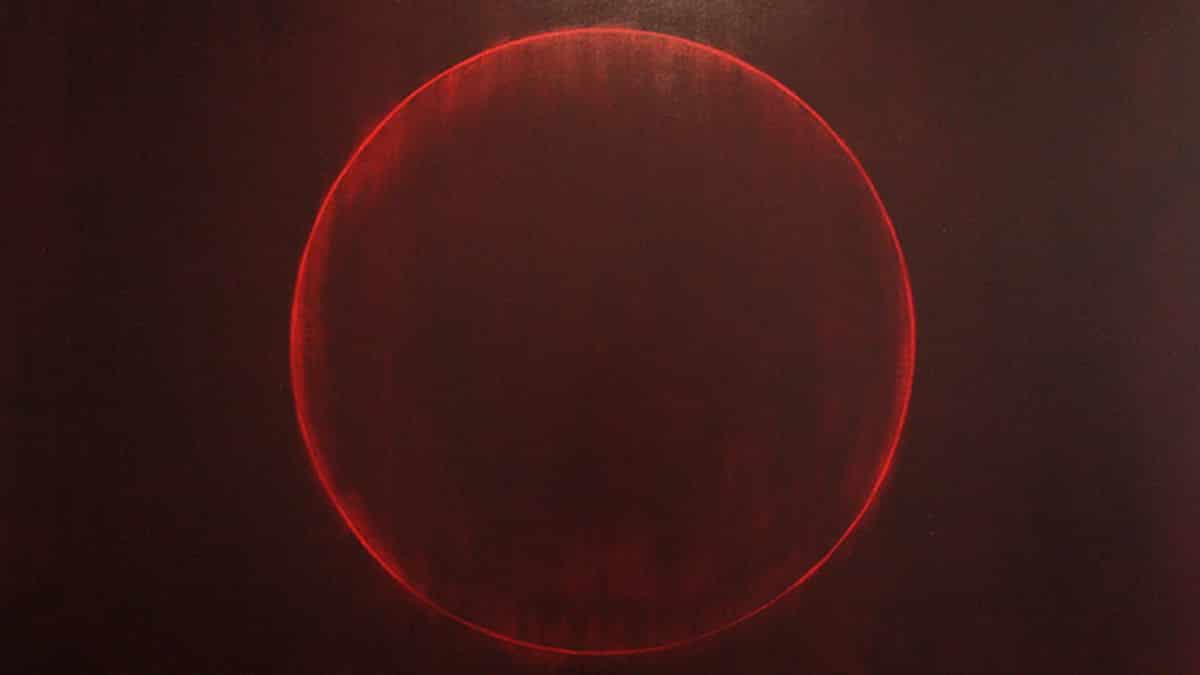“The entire Kosmos arises in the eye of Spirit, in the I of Spirit, in my own intrinsic awareness, this simple ever-present state, and I am simply that.”Ken Wilber
“With the eye of Spirit, God can be seen. With the eye of Spirit, the universe unfolds its innermost contours. With the eye of Spirit, noumenon announces its pure Presence. With the eye of Spirit, the Kosmos delivers its deepest secrets. And with the eye of Spirit, the intractable nightmares of the sensory and mental dilemmas yield to the radiance of Emptiness itself.”Ken Wilber
Part 1: Introducing the Eye of Spirit
Become a supporting member to watch the full conversation
Humanity is entering the Transformation Age, a new era of human civilization, with Integral Consciousness rising at its leading edge. Our members don’t use Integral Life as just another media subscription they use weekly or discard. Instead, most stay with us for years, using Integral Life to learn Integral Philosophy and build an integral mind slowly, methodically and when they need it. We’re here to help you shape the future that’s emerging no matter where your life takes you.
Get Full Access For $1 (7 days)* Or explore all membership plans → * Trial price for the first 7 days, then $20/month. Cancel or switch plans in 2 minutes at any time.In 1997 Ken Wilber published his groundbreaking and widely celebrated book, The Eye of Spirit: An Integral Vision for a World Gone Slightly Mad, which followed his seminal book Sex, Ecology, Spirituality by applying his Integral approach to important fields like psychology, spirituality, anthropology, cultural studies, art and literary theory, ecology, feminism, and planetary transformation.
At the core of The Eye of Spirit is a fairly simple premise — that all of us possess three primary modes of perception that we use to disclose reality:
- The “Eye of Flesh”, which refers to our sensory perception and experience;
- The “Eye of Mind”, which refers to our mental perception and experience;
- The “Eye of Spirit”, which refers to our spiritual perception and experience.
Watch as Ken introduces some of these central ideas from The Eye of Spirit.
Part 2: Unraveling the Riddle of States and Stages
At the time The Eye of Spirit was published, it was not yet clear what the relationship was between the vertical stages of “growing up” and the major state-stages of “waking up”. This insight would not arrive until the early 00’s and the emergence of the “Wilber-Combs Matrix”, which shows how all of these states are available to us at every step of our growth and development. This helps explain how people can have any number of state experiences at any time – whether emotional states, spiritual states, or other non-ordinary states – but will always interpret those experiences according to whatever developmental level they happen to be at.
Before this new integration, the integral model simply stacked the spiritual states-stages on top of developmental structure-stages — which seemed to make a a lot of sense at the time! But when the Wilber-Combs Matrix did finally emerge, it represented a major new evolution in Ken’s thinking. Watch as Ken explains how this confusion arose in the first place, and how he reconciles the major ideas of The Eye of Spirit with this new insight.
Part 3: The Five Major States
The Wilber-Combs Matrix emphasizes the five primary states that are available to human beings:
- Gross-waking states, such as what you might experience riding a bike or reading this page or doing bodywork;
- Subtle-dream states, such as you might experience in a vivid dream, or in a vivid daydream or visualization exercise, as well as in certain types of meditation with form;
- Causal-formless states, such as deep dreamless sleep and types of formless meditation and experiences of vast openness or emptiness;
- Witnessing states — or “the Witness” — which is a capacity to witness all of the other states; for example, the capacity for unbroken attention in the waking state and the capacity to lucid-dream;
- Ever-present Nondual awareness, which is not so much a state as the ever-present ground of all states (and can be “experienced” as such).
Watch as Ken gives a detailed overview of these major states of consciousness.
Part 4: Defining “Transpersonal” and “Transrational”
Ken’s spectrum-like approach to growth and awakening provided us with some very clean and simple heuristics to help us understand concepts like prerational vs. transrational, prepersonal vs. transpersonal, etc. This became known as the “pre-trans fallacy” — which, among other things, helped us discern authentic and mature forms of spirituality from some of its more infantile, narcissistic forms.
But now that we have the Wilber-Combs matrix, which demonstrates how these state-stages can be perceived and experienced no matter where we are on the developmental spectrum, this would appear to change the definitions of terms like “transrational” and “transpersonal”, since these spiritual modes of knowing are no longer conceived as “higher” levels in our vertical unfolding that require growth and development through all prior stages in order to experience.
How does this new understanding shift our understanding of the Eye of Spirit and terms like “transrational” and “transpersonal”? Watch as Ken explains.
Part 5: The Five Meanings of “Spirituality”
“Spirituality” is a fairly nebulous word that can mean many different thiings to diifferent people. Here Ken offers a brief overview of the five major meanings of “spiritual”:
- Spirituality as the highest levels in any of our developmental lines;
- Spirituality as a particular line of development;
- Spirituality as a particular attitude (such as openness or love) that can be expressed at any given stage.
- Spirituality as an extraordinary (but temporary) peak experience;
- Spiritualtiy as the sum total of all the highest stages of all our developmental lines.
Part 6: Opening Up — The Lines of Spirit
What is the relationship between the “Eye of Spirit” and our multiple lines of intelligence? How do things like cognitive intelligence, spiritual intelligence, and moral intelligence influence or factor into our “Eye of Spirit” mode of knowing? What other lines that are critical for us to track in this discussion?
Most of us are already familiar with the “4 Ups” — Wake Up, Grow Up, Clean Up, and Show Up — which refer to four related (but irreducible) dimensions of human experience. Here Ken introduces a fifth category, which he calls “Opening Up”, which relates to bringing more awareness to our multiple capacities, talents, and lines of development.
This was one of my favorite parts of this entire discussion, and it’s something you definitely do not want to miss.
Part 7: Verifying Nonduality
It’s hard to say anything at all about non-duality without immediately contradicting everything that was already said. But Ken is much better at this than most, which is just one of the many reasons he is so much fun to talk to.
As Ken explains, non-duality can not be “located” anywhere on the Four Quadrant map. It does not exist within any of these dimensions — rather, it is the paper the quadrants are drawn upon, as well as the contents of everything drawn.
But if nonduality transcends both interiors and exteriors, individuals and collectives, and every other polarity you can imagine, why is it that nondual reality can itself only be disclosed via Zone 1 (the “inner” of the Upper-Left quadrant) state-training practice? Is it conceivable that we could one day find equivalent “proof” of nonduality by using other methodologies in other quadrants?
It’s an important question, because the recognition of nonduality in Ken’s framework leads some people to believe that Integral Philosophy is a version of “idealism”, where everything in existence is occurring within some fundamentally irreducible “mind” somewhere. Since the only injunction to actually “verify” nondual reality exists in the Zone 1 phenomenologial space, this can mislead some people into thinking that the UL quadrant itself is somehow “primary”, and everything else somehow emanates from there. This foregrounds some important distinctions between ontology (what exists) and epistemology (how we know what exists) that we hope to cover in a future episode of The Ken Show.
Part 8: Always Already
The final chapter of Eye of Spirit, titled “Always Already: The Brilliant Clarity of Ever-Present Consciousness”, represents one of the most beautiful and impactful pieces of spiritual writing Ken has ever produced. Ken reads a passage from this chapter as a final capstone for our discussion.
We hope you enjoyed this episode of The Ken Show! Let us know what you think in the comments below, and also be sure to let us know if you have any questions for future episodes!
Written and produced by Corey deVos
Music by Stuart Davis

Become a member to access the full episode
Start building your big picture mind & support the global emergence of Integral consciousness

“Integral Life is the most important and globally-relevant platform for the leading edge of Integral consciousness evolution”
– Eugene P.
More Integral Spirituality Resources
The Varieties of Integral Spiritual Experience
Ken Wilber and Corey deVos
Ken and Corey explore the path of Waking Up — a guided tour through temporary states of consciousness that include everything from emotional states to chemically-induced states to the direct, immediate experience of timeless reality, revealing an infinitely renewable source of energy, resilience, and creative inspiration that rests at the very center of you.
Always Already: The Brilliant Clarity of Ever-Present Awareness
Ken Wilber
In this excerpt from The Eye of Spirit, Ken Wilber offers one of the most powerful (and beautiful) pieces of spiritual writing he has ever produced. This is the very first time these words have been reproduced on the web, and we invite you to share this chapter however you like.
Five Reasons You’re Not Enlightened (And Five Ways to See That You Always Already Are!)
Ken Wilber
Explore five simple shifts of perspective to help you recognize your own already-enlightened condition, right here and right now — five different interpretations of nondual consciousness at the heart of some of history’s greatest spiritual traditions.
About Ken Wilber
Ken Wilber is a preeminent scholar of the Integral stage of human development. He is an internationally acknowledged leader, founder of Integral Institute, and co-founder of Integral Life. Ken is the originator of arguably the first truly comprehensive or integrative world philosophy, aptly named “Integral Theory”.
About Corey deVos
Corey W. deVos is editor and producer of Integral Life. He has worked for Integral Institute/Integal Life since Spring of 2003, and has been a student of integral theory and practice since 1996. Corey is also a professional woodworker, and many of his artworks can be found in his VisionLogix art gallery.





